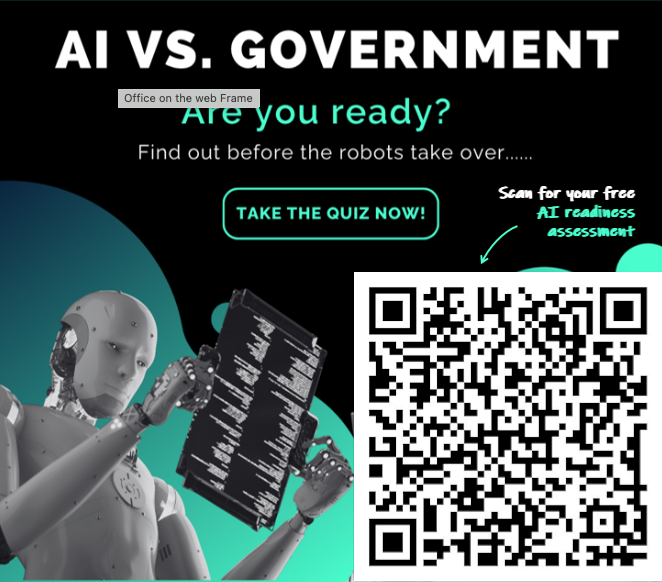AI, Portals and Case Management for Government
On July 16 in Canberra, The Factor and Microsoft brought together Public Sector leaders for a focused conversation on modernising Government Services through automation, scalable digital platforms, and responsible AI.
The event explored how Government Departments, Agencies and Public Sector Organisations can take practical steps toward transformation, without disrupting operations or compromising on governance. From digitising legacy processes to deploying intelligent agents, the half-day session provided clear answers to a complex challenge how can Government deliver faster, smarter, more compliant citizen services in an AI-powered world?

Aligning technology with Public Sector reality
Microsoft’s Kendall Morrison presented a clear-eyed view of the AI landscape and its impact on business operations across industries. The message was both simple and significant, AI has surpassed the experimental phase and is now embedded in business operations. Microsoft Copilot and generative AI capabilities are now integrated across Dynamics 365, Power Platform and Microsoft 365, ready to be safely leveraged by Government teams.
Crucially, this shift isn’t theoretical. According to recent research from Bain, McKinsey and BCG, organisations analysing the implementation of AI in customer-facing operations, are already seeing measurable impact. Up to 50% increases in issue resolution per hour, 30% improvements in first-time case resolution, and significant reductions in the need for human intervention. These results showcase the reality of AI and its successful integration.
But while the technology is available, legacy systems, siloed data and rigid workflows remain common blockers to adoption. That’s why this event emphasised a foundational approach to transformation, one that prioritises accessibility, security and interoperability from the start.
Digital forms as the gateway to AI readiness
Luke Kelly, Senior Product Manager at The Factor, shared a clear case for where many agencies should begin, forms.
Static forms, often built in Word, PDF or bespoke formats, remain one of the most persistent friction points in Government service delivery. They can be inaccessible, prone to error, and disconnected from the systems that support decision-making. Luke introduced FormFactor, The Factor’s low-code platform for secure, WCAG 2.1 AA-compliant forms built on Microsoft Power Platform.
Through real-world examples and a live demo, Luke showcased how FormFactor enables rapid transformation of legacy forms into modern, auditable digital experiences, connected directly to Microsoft Dataverse, Power Automate and Dynamics 365. This improving citizen experience and lays the groundwork for AI-readiness by consolidating structured, high-integrity data.
The rise of agentic AI in Government Services
In a joint session, Kia Shakibaee (The Factor) and David Hearne (Microsoft) introduced attendees to AI agents, intelligent, autonomous systems that can trigger, assess and complete business processes with minimal human oversight.
These agents are designed not to work alongside staff, automating tasks like triage, classification, and internal routing. For case management in particular, this marks a turning point. Manual processes that previously took hours or days can now be executed in real time, with full traceability and alignment to Government guardrails.
Importantly, these tools aren’t years away from implementation. With Microsoft’s Azure OpenAI and Copilot frameworks, agencies can now deploy AI Agents on secure, locally hosted infrastructure that aligns with Australian Government privacy and compliance standards.
According to IDC, over 1.3 billion AI Agents are expected to be in operation by 2028. The public sector has a clear opportunity to lead in this space, if the right architecture and data models are in place.
AI readiness in focus
To wrap up the event, Neil Hathaway delivered a visual summary that crystallised the key blockers and enablers of AI adoption in Government.
His session highlighted three common pitfalls: outdated security policies, siloed data, and legacy systems, all of which can quietly derail even the best AI intentions. For each, he outlined practical “quick wins” that public sector teams can implement immediately, without needing full-scale transformation.
Neil also mapped these challenges to the Federal Government’s broader AI response, including the push for risk-based regulation, greater transparency, and safe experimentation through tools like Microsoft Copilot.
A practical path forward
The event concluded with a challenge to Government Agencies, modernisation doesn’t require a full rebuild of your organisation, just the decision to begin.
Whether you’re facing pressure to improve service performance, meet accessibility obligations, or simply reduce the administrative burden on staff, the building blocks are available today. With secure platforms, responsible AI, and a clear understanding of Government priorities, the path forward is both achievable and aligned.

Ready to take the first step toward AI readiness?
Are you AI ready?
The Factor has developed a free AI Readiness Assessment, designed specifically for the public sector. It’s a quick, accessible way to evaluate your current environment, identify common blockers, and uncover practical next steps aligned with your agency’s goals.
Whether you’re dealing with legacy systems, navigating data silos, or considering the role of AI in service delivery, this assessment offers a grounded starting point, no technical prep required.

Because the future of Government services isn’t just digital, it’s intelligent, secure, and ready to evolve.
Let’s connect!
We provide unique solutions fit for you! Let’s chat and find out how we can help!